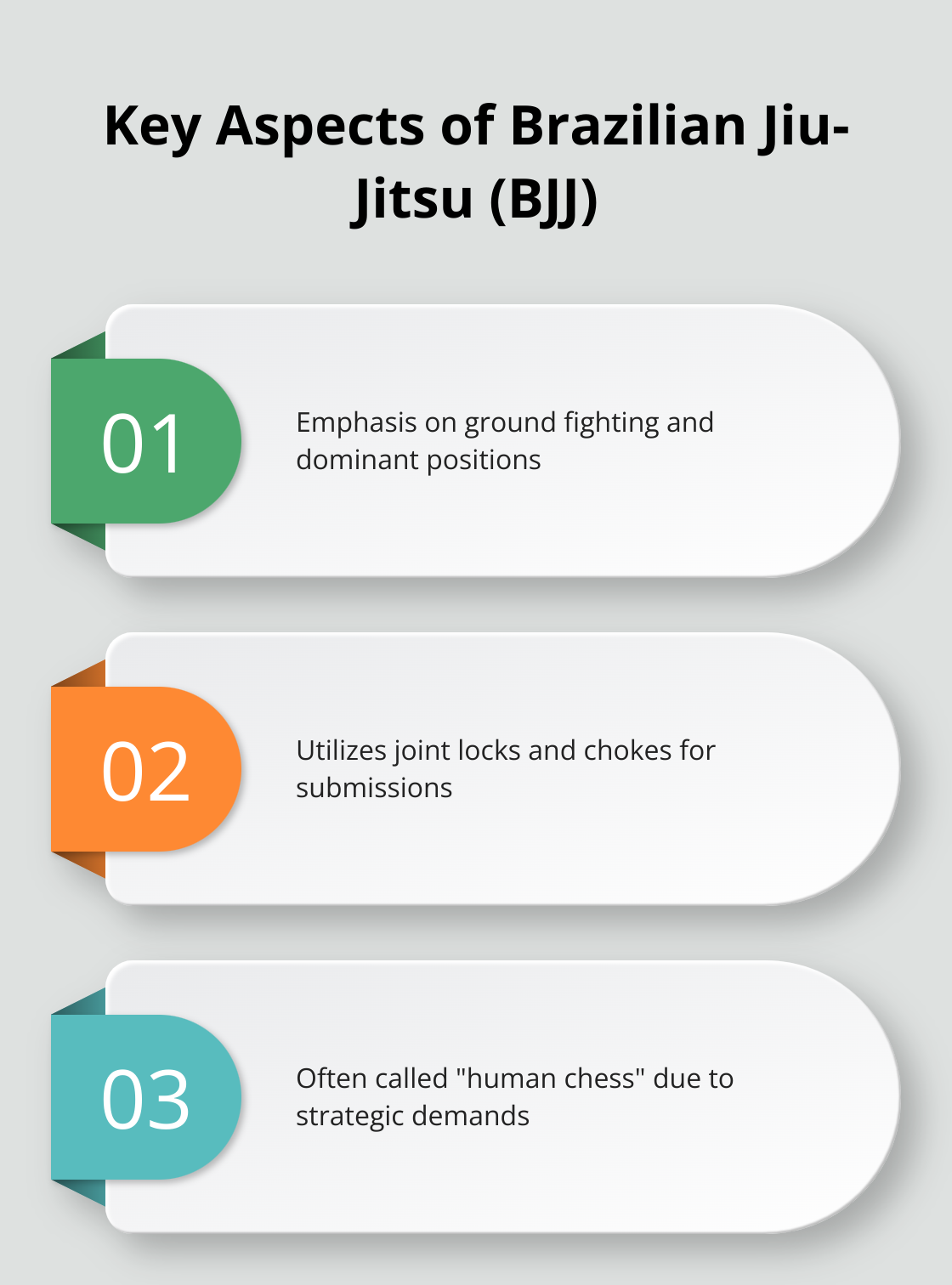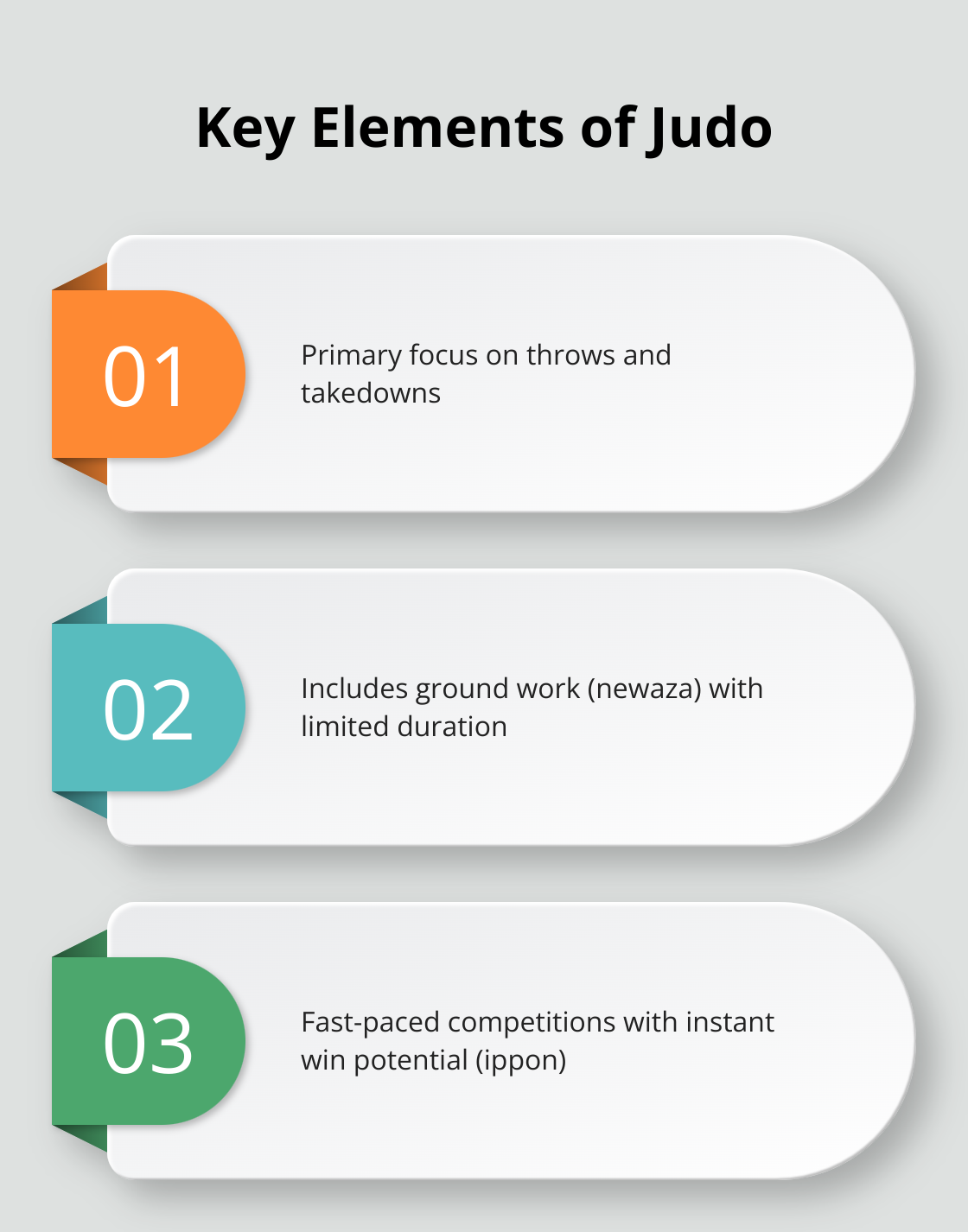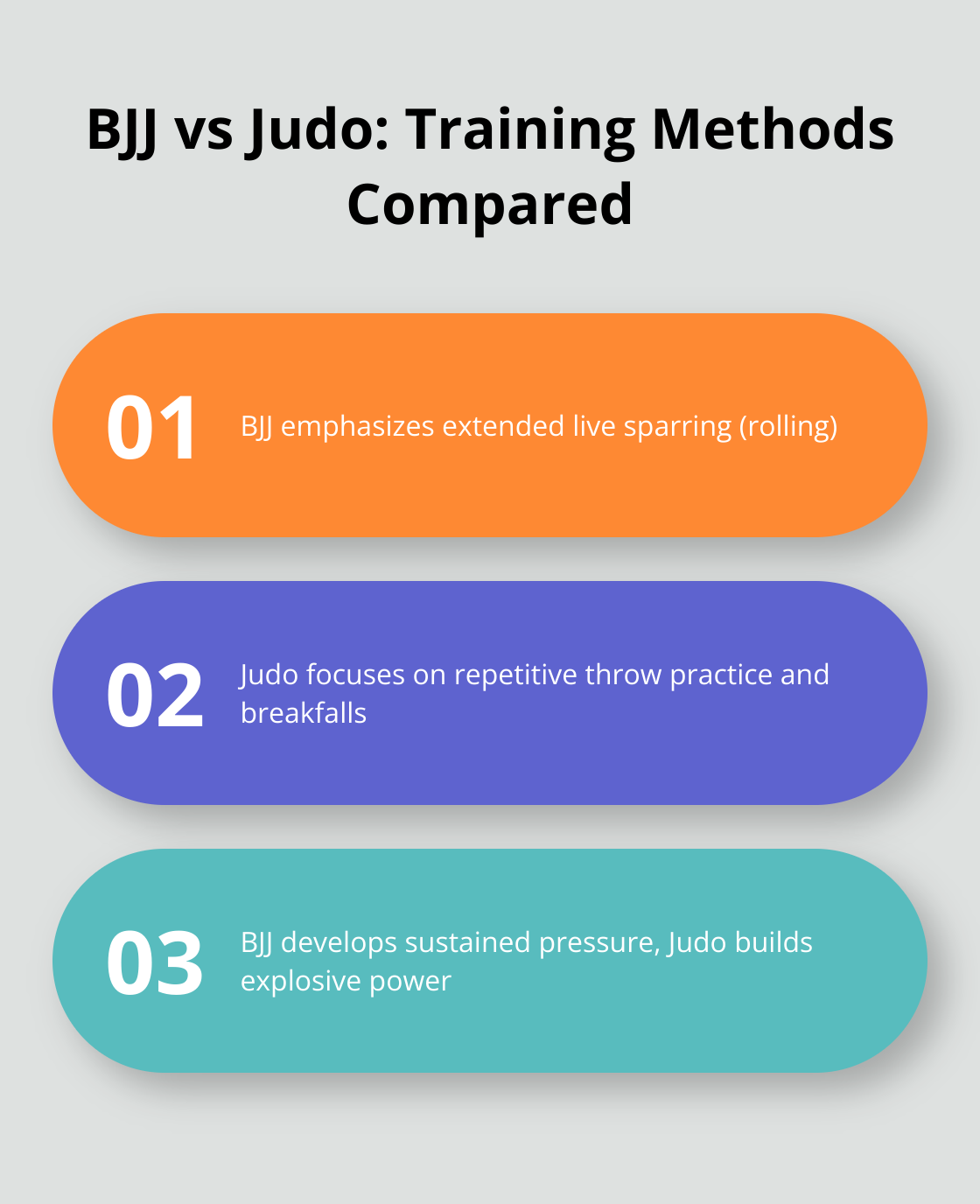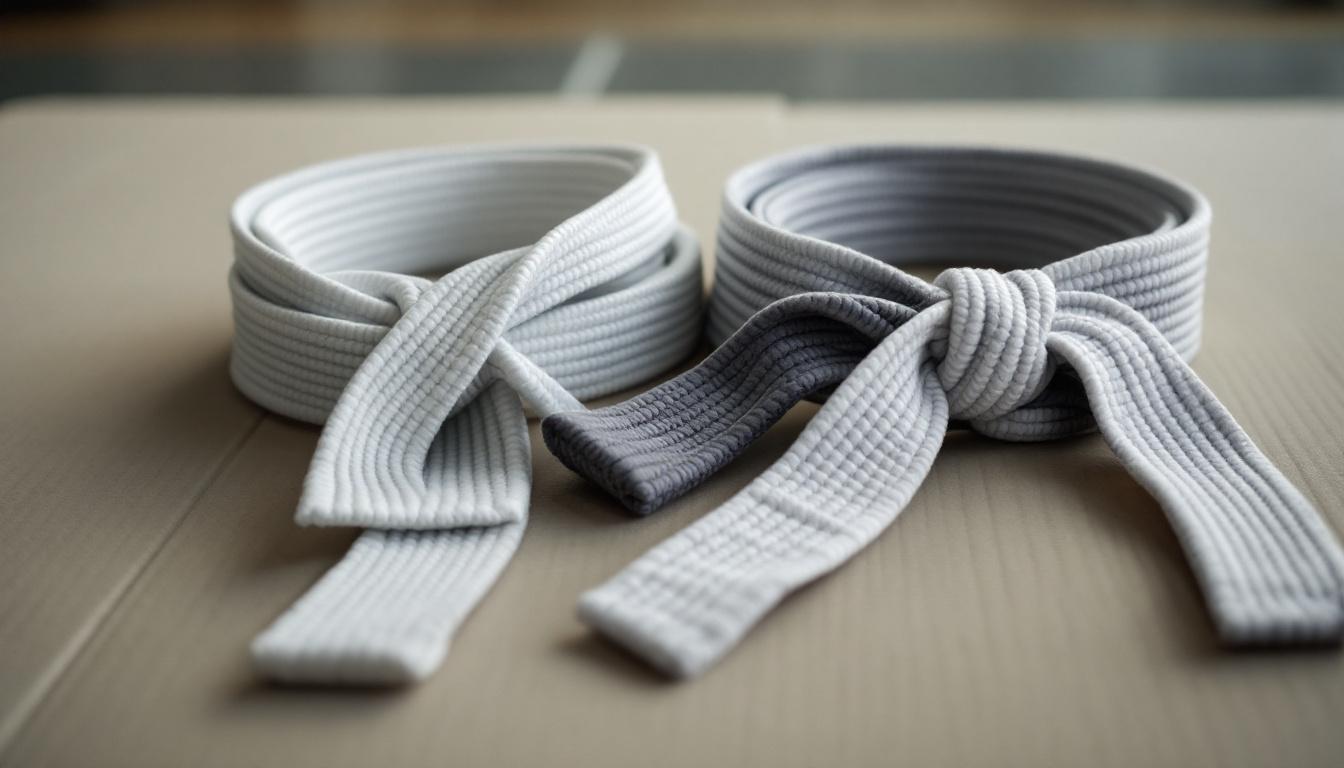At Jiu jitsu, we often get asked about the differences between Brazilian Jiu-Jitsu (BJJ) and Judo. Both martial arts have rich histories and unique strengths, but they differ in their focus and techniques.
In this post, we’ll explore the key aspects of Judo vs Jiu Jitsu, helping you understand which discipline might be the best fit for your goals and preferences. We’ll break down the core principles, training methods, and benefits of each martial art to give you a clear picture of what to expect.
What is Brazilian Jiu-Jitsu?
Brazilian Jiu-Jitsu (BJJ) has become a powerhouse in the martial arts world. This grappling-based discipline emphasizes ground fighting and submissions. The Gracie family developed BJJ in Brazil during the early 20th century, modifying traditional Japanese jujutsu techniques to create a unique and effective martial art.
The Evolution of BJJ
The Gracie family, particularly Hélio Gracie, adapted jujutsu techniques to work for smaller, weaker practitioners against larger, stronger opponents. This focus on leverage and technique (rather than raw strength) distinguishes BJJ from many other martial arts.
Ground Fighting and Submissions
BJJ’s primary objective involves taking opponents to the ground and using various techniques to achieve dominant positions. From these positions, practitioners apply joint locks or chokes to force their opponents to submit.
The Mental Game
BJJ transcends physical prowess, often earning the moniker “human chess” due to its strategic demands.
Training and Competition
BJJ training typically involves both gi (traditional uniform) and no-gi practice. Competitions feature weight classes and belt ranks (white, blue, purple, brown, and black). The International Brazilian Jiu-Jitsu Federation (IBJJF) organizes major tournaments worldwide, attracting thousands of competitors annually.

As we explore the world of BJJ, it’s essential to understand its counterpart in the grappling arts: Judo. Let’s examine the key aspects of this Olympic sport and how it compares to BJJ.
What is Judo?
Judo, which means “gentle way” in Japanese, is a martial art and Olympic sport that originated in 1882. Jigoro Kano founded Judo, evolving it from traditional Japanese jujutsu techniques. The art emphasizes the principle of maximum efficiency with minimum effort.
The Art of Throwing
Judo’s primary focus lies in throws and takedowns. Judoka (Judo practitioners) learn to use an opponent’s momentum and balance against them. This approach allows smaller individuals to overcome larger, stronger opponents through technique rather than brute force.
The International Judo Federation recognizes 67 official throwing techniques in Judo. These techniques fall into four categories:
- Hand techniques (te-waza)
- Hip techniques (koshi-waza)
- Foot and leg techniques (ashi-waza)
- Sacrifice techniques (sutemi-waza)
Ground Work in Judo
While throws form the cornerstone of Judo, ground work (newaza) plays a significant role. Newaza includes:
- Pinning techniques (osaekomi-waza)
- Choking techniques (shime-waza)
- Joint locking techniques (kansetsu-waza)
However, ground work in Judo receives less time and emphasis compared to Brazilian Jiu-Jitsu. In competitive Judo, referees limit ground work to short durations. If competitors make no progress within a few seconds, the referee stands them up to resume the match from a standing position.
Training and Competition
Judo training involves both kata (pre-arranged forms) and randori (free practice). Kata helps judoka perfect their technique, while randori allows for the application of skills in a more realistic, dynamic setting.
Judo competitions are fast-paced and intense. Matches typically last five minutes for men and four minutes for women. A match can end instantly if a competitor scores an ippon (awarded for a perfect throw, a 20-second pin, or a submission).
Cross-Training Benefits
Many martial artists recognize the value of Judo techniques and incorporate elements of this art into their training programs. Cross-training in Judo can significantly enhance a grappler’s skillset, particularly in the areas of takedowns and balance.

As we explore the similarities and differences between Judo and Brazilian Jiu-Jitsu, it becomes clear that both arts offer unique strengths and challenges. Let’s compare these two grappling disciplines to help you determine which might best suit your goals and preferences.
BJJ vs Judo: Which Suits You Better
Brazilian Jiu-Jitsu (BJJ) and Judo offer distinct approaches to grappling martial arts. Both disciplines stem from Japanese jujutsu but have evolved into unique forms with different emphases and competitive structures. This chapter compares these martial arts to help you determine which aligns best with your goals.
Grappling Techniques and Focus
BJJ concentrates on ground fighting, with practitioners spending most of their time on the mat. The art emphasizes positional control, submissions, and the ability to fight from one’s back. Judo, on the other hand, prioritizes standing techniques, particularly throws and takedowns. While Judo includes ground work (newaza), it receives less attention compared to BJJ.
A study aimed to relate indicators of physical fitness with combat performance variables in Judo and BJJ. This research highlights the contrasting priorities of these martial arts.
Competition Rules and Scoring
BJJ and Judo competitions differ significantly in their rules and scoring systems. BJJ tournaments allow matches to continue on the ground for extended periods, with points awarded for achieving dominant positions and submissions. The International Brazilian Jiu-Jitsu Federation (IBJJF) scoring system rewards takedowns, sweeps, and positional advancements.
Judo competitions, regulated by the International Judo Federation (IJF), focus heavily on throws. A clean, powerful throw can end a match instantly with an ippon. Ground work in Judo typically lasts for short durations, with referees standing competitors up if they observe no progress. This creates a faster-paced, more dynamic standing game compared to BJJ’s methodical ground battles.
Training Methods and Physical Demands
BJJ training often involves extended periods of live sparring (rolling) at various intensities. This approach allows practitioners to develop a deep understanding of grappling mechanics and problem-solving skills. A typical BJJ class might include 30-45 minutes of technique drilling followed by 30-45 minutes of live rolling.
Judo training incorporates live practice (randori) but places a greater emphasis on repetitive throw practice and breakfalls. The physical demands of Judo can be more explosive, with practitioners needing to generate power for throws quickly. This often results in a different type of conditioning compared to the sustained, pressure-based exertion common in BJJ.

Choosing Your Path
Your choice between BJJ and Judo depends on various factors, including your physical attributes, learning style, and personal goals. BJJ might appeal more to those who prefer ground fighting and strategic problem-solving, while Judo could attract individuals who enjoy dynamic standing techniques and explosive movements.
At Souza Grappling Co., we offer programs that can help you explore elements of both disciplines. Our expert trainers can guide you through the nuances of BJJ and Judo (as well as other martial arts), helping you find the style that best suits your needs and preferences.
Final Thoughts
The choice between Brazilian Jiu-Jitsu and Judo depends on your personal goals, physical attributes, and learning preferences. BJJ focuses on ground fighting and submissions, while Judo emphasizes dynamic throws and takedowns. Your body type and natural inclinations may influence your decision in the Judo vs Jiu Jitsu debate.
We at Souza Grappling Co. recommend you try both disciplines before making a final decision. Many martial artists discover that experiencing both Judo and BJJ provides valuable insights into which style resonates more with their goals. Our state-of-the-art facility offers programs in both disciplines, allowing you to explore and compare them under expert guidance.
Cross-training in both BJJ and Judo can offer significant benefits. Many practitioners find that the skills developed in one discipline complement and enhance their performance in the other. Judo’s powerful throws can improve BJJ performance, while BJJ’s ground control techniques can give Judoka an edge during newaza.




